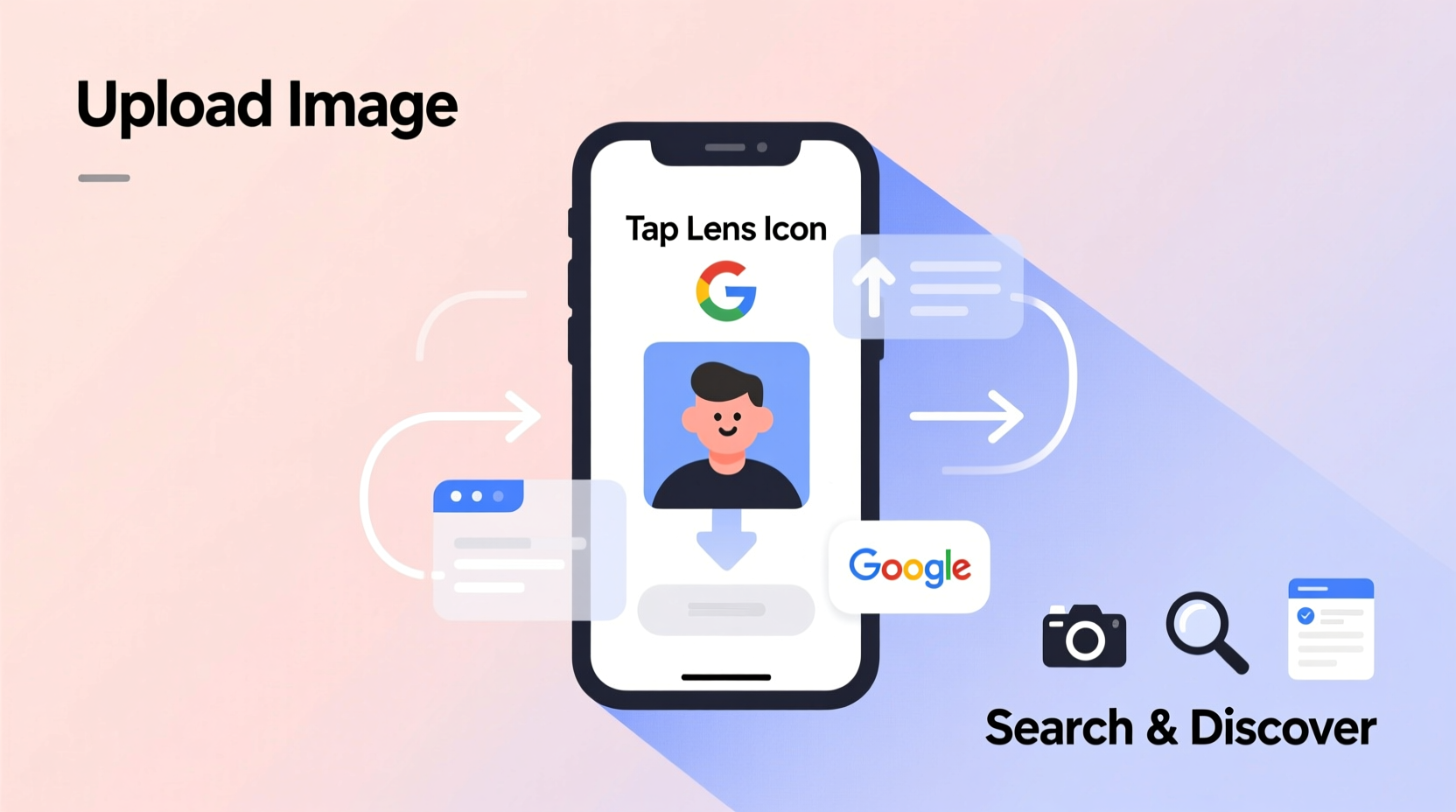In an era where visual content dominates online experiences, mastering image-based search is no longer optional—it's essential. Google Lens and Google Images have transformed how users discover products, information, and services through photos. Whether you're a marketer, e-commerce operator, or content creator, understanding how to properly upload and optimize images can dramatically increase visibility and engagement. The key lies not just in uploading images, but in doing so strategically to align with Google’s visual indexing systems.
Understanding Google Visual Search: How It Works

Google visual search uses machine learning and computer vision technology to analyze the content of an image and match it with relevant results. When someone uploads a photo to Google Images or uses Google Lens, the system scans colors, shapes, textures, objects, and context to deliver related information. For example, taking a photo of a plant can yield its species; snapping a dress can lead to similar styles available for purchase.
Behind the scenes, Google indexes images based on multiple signals: file names, alt text, surrounding content, page structure, and metadata. This means that even if your image isn’t directly searched by filename, its context determines whether it appears in relevant queries. Google prioritizes high-quality, well-labeled visuals that provide clear value to users.
“Images are no longer passive elements—they’re entry points into deeper content discovery.” — Dr. Lena Park, Senior Researcher at Google AI
Step-by-Step Guide to Uploading Optimized Images
To ensure your images perform effectively in visual searches, follow this structured process:
- Select high-resolution images: Use sharp, well-lit photos with clear subjects. Avoid blurry or overly filtered visuals.
- Resize appropriately: Aim for dimensions between 1200–1600 pixels wide. Larger images may slow down pages, while smaller ones lose detail.
- Compress without quality loss: Use tools like TinyPNG or Squoosh to reduce file size while preserving clarity.
- Rename files descriptively: Replace generic names like “IMG_1234.jpg” with specific ones such as “blue-ceramic-coffee-mug.jpg”.
- Add descriptive alt text: Write concise, keyword-rich descriptions that explain what the image shows (e.g., “hand-painted blue ceramic coffee mug on wooden table”).
- Embed structured data (Schema.org): Use ImageObject schema markup to help Google understand subject, author, license, and usage rights.
- Upload to fast-loading, mobile-friendly pages: Ensure the hosting page loads quickly and displays the image prominently within relevant content.
Best Practices for Using Images in Visual Search Optimization
Simply uploading an image isn't enough. To make it work effectively across Google’s visual ecosystem, apply these proven strategies:
- Use original photography: Stock photos are less likely to rank uniquely. Custom images stand out and build brand authenticity.
- Include multiple angles: For product images, show front, back, side, and close-up shots to improve recognition accuracy.
- Minimize text overlays: While captions can be useful, excessive text on images reduces clarity and confuses visual analysis.
- Host images on your own domain: Third-party platforms dilute SEO benefits. Keep control by using your site’s server or CDN.
- Update image sitemaps: Submit an updated image_sitemap.xml to Google Search Console regularly to notify crawlers of new visuals.
Do’s and Don’ts of Image Optimization for Visual Search
| Do’s | Don’ts |
|---|---|
| Use descriptive filenames with keywords | Use generic names like DSC001.jpg |
| Write accurate, detailed alt text | Stuff alt text with irrelevant keywords |
| Optimize loading speed via compression | Upload full RAW camera files |
| Place images near relevant textual content | Isolate images on blank pages |
| Use HTTPS and canonical tags | Allow duplicate images across URLs without consolidation |
Real Example: A Home Decor Brand Boosts Traffic via Visual Search
A mid-sized home decor brand noticed declining organic traffic despite strong product photography. After auditing their site, they realized most images were named generically (“product_image_5.jpg”) and lacked alt text. They launched a three-month optimization campaign:
- Renamed over 800 image files using descriptive keywords (e.g., “mid-century-modern-teak-side-table.jpg”)
- Added unique alt text and embedded Schema.org markup
- Created dedicated product galleries with zoom functionality
- Submitted updated image sitemaps weekly
Within five months, Google indexed 3x more of their images. Reverse image searches began linking back to their product pages, and traffic from Google Images increased by 67%. Notably, Pinterest and Google Lens referrals rose significantly—proof that proper image optimization fuels cross-platform discovery.
Essential Checklist for Visual Search Readiness
✅ Image Optimization Checklist:
- Are all image filenames descriptive and keyword-rich?
- Is alt text present and meaningful for every image?
- Have images been compressed for fast loading?
- Are images hosted on a secure (HTTPS), mobile-responsive site?
- Is structured data (ImageObject) implemented?
- Has an image sitemap been submitted to Google Search Console?
- Are duplicate images consolidated with canonical tags?
- Does surrounding page content support the image context?
Frequently Asked Questions
Can I use the same image across multiple pages?
Yes, but avoid duplication without purpose. If used on different pages, tailor the alt text and surrounding content to match each context. Use canonical tags to indicate the primary version when necessary.
How long does it take for images to appear in Google Visual Search?
Indexing time varies. Typically, optimized images appear within 1–4 weeks after upload, especially if included in a submitted sitemap. Speed up the process by sharing the URL on social media or earning backlinks.
Does image size affect visual search ranking?
Not directly, but larger, high-resolution images tend to perform better because they offer more detail for recognition. However, balance quality with performance—images should load quickly, ideally under 3 seconds.
Conclusion: Turn Your Images Into Discovery Engines
Your images shouldn’t just illustrate content—they should actively drive it. By uploading photos with intention, optimizing metadata, and aligning with Google’s visual search logic, you transform static visuals into powerful tools for discovery. Every well-optimized image becomes a potential doorway through which new users find your brand, learn about your offerings, and engage with your message.









 浙公网安备
33010002000092号
浙公网安备
33010002000092号 浙B2-20120091-4
浙B2-20120091-4
Comments
No comments yet. Why don't you start the discussion?